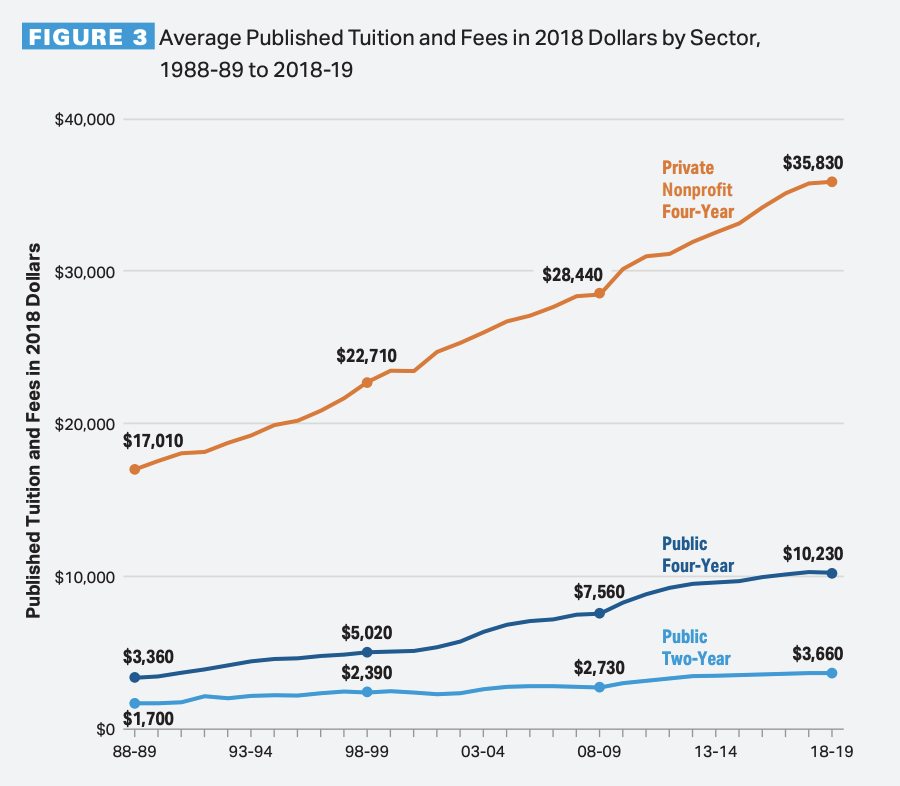Student loan expert: 'The system is rigged’
The $1.5 trillion student debt crisis involves the federal government holding the vast majority of loans, and one student loan expert believes that “the system is rigged” because of that.
“The federal government has 92% of the [student loan] market. So just 8% is left with private lenders,” Consumer Bankers Association VP of Congressional Affairs and Director of Policy Kris Fallon told Yahoo Finance’s On The Move (video above). “The system is rigged in favor of the federal government.”
While presidential candidates and Senators are trying to fix the crisis — proposals range from total debt cancellation to expanding Pell grants — 44 million Americans hold student loans, and more than a tenth of the outstanding amount is in serious delinquency or in default in the first quarter of this year, according to the New York Fed.
The weak performance is a direct result of the federal government controlling the market, and the solution would be to open it up to private lenders, argued Fallon.
Because “private loans have a 98% repayment rate,” she explained. “So this is really a problem with federal student loans. There's a federal student loan crisis.”

‘We made mistakes from the beginning’
How did 92% of student loans end up in federal hands in the first place?
For the past few decades, the overwhelming majority of student loans were controlled by banks or private lenders. They were guaranteed by the federal government because the borrowers were young and had little to no credit history.
The relatively small student loan market was then “considered a sleepy backwater in consumer finance,” former Consumer Financial Protection Bureau (CFPB) Ombudsman and current Executive Director of D.C.-based nonprofit Student Borrower Protection Center Seth Frotman told Yahoo Finance in a previous interview.
“We made mistakes from the beginning,” Sara Goldrick-Rab, professor of higher-education policy at Temple University told Yahoo Finance. “The mistakes were made, even in the 60s and 70s, in crafting the system itself… Our presidents since that time has inherited the system, and made choices about what to do about it.”
She added: “The real culprit for the current situation is Ronald Reagan. Because Ronald Reagan embraced the ideas that every student and family should be on their own. When it came to paying for college, so he did not make investments in the Pell grants. He made a major move to really just say, take a loan. And that has had downstream implications — he accelerated that movement.”
Over the years, regulators didn’t pay much attention. But as college costs began to climb, increasingly larger loans were taken out and that “backwater” industry became thriving and profitable.

And when the Great Recession hit, the feeble economy placed a huge strain on borrowers, causing the banks and private lenders to face a credit crunch with bad assets on the books.
Congress bailed out these student loan lenders to “ensure students access to loans when lending in the nation's credit markets was frozen,” then-Education Secretary Arne Duncan wrote in an opinion piece in the Wall Street Journal in 2009.
But that takeover of mountains of new student debt was difficult to manage, and the Department of Education soon need up signing contracts with the old services again, like Navient, Nelnet, Great Lakes, and so on.

Fallon’s proposal essentially calls for government to reset what happened during the recession and hand the student loans back to the private sector.
“And at the heart of that is addressing college costs,” she added. “Unfortunately, a lot of proposals that we've seen of late haven't addressed that.”
She also suggested putting “responsible caps” on these student loan programs, and improving financial literacy, so that borrowers “understand the loans that they're taking out.”
Ultimately, “there is a role for the federal government in higher education,” Fallon said. “But that role should really be limited to those most in need. And the private market should be allowed to serve those with greater means and the ability to access the private markets.”
—
Aarthi is a writer for Yahoo Finance. Follow her on Twitter @aarthiswami.
Read more:
'Lousy system': U.S. official who resigned explains how the student debt crisis got so bad
'It's too good’: How for-profit colleges entice and hinder Americans
Presidential candidate Pete Buttigieg: ‘I have six-figure student debt’
Bernie Sanders unveils sweeping student debt cancellation plan
Read the latest financial and business news from Yahoo Finance
Follow Yahoo Finance on Twitter, Facebook, Instagram, Flipboard, SmartNews,LinkedIn, YouTube, and reddit.

